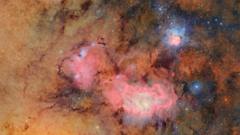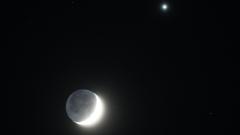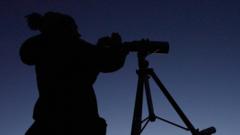As Halloween arrives, the cosmos is buzzing with spine-chilling news. Two black holes have emerged in headlines due to their unique and ominous behaviors. One is labeled a "serial killer," on the brink of consuming its second star in five years, while the other is shaking up conventional astrophysical theories by being part of a peculiar three-body black hole system.
Black holes, the enigmas of the universe predicted by Einstein's theory of general relativity over a century ago, are thought to exist in vast numbers, with millions residing in our Milky Way galaxy alone. These gravitational voids are the remnants of massive stars that have imploded and collapsed, with most galaxies hosting a supermassive black hole at their center, often millions to billions of times heavier than our sun.
The "killer" black hole first gained attention when astronomers detected a flare from a supermassive black hole located 215 million light-years away. This flare resulted from a star that ventured too close to the black hole's gravitational grasp, resulting in a “tidal disruption event” known as AT1910qix. Over the subsequent five months, gravitational forces tore the star apart, creating a swirling disc of debris around the black hole, with half of the star's material consumed and the rest lingering nearby.
Now, this leftover matter is intruding upon another star’s orbit, which swings close to the black hole every 48 hours. Each time it does, the star elicits a burst of violent X-rays and other radiation as it collides with the debris. An international team of astronomers led by Matt Nicholl from Queen’s University, Belfast, has been monitoring this dynamic scene using an array of advanced space telescopes, including the Chandra Observatory and the Hubble Space Telescope, with their findings recently published in the journal Nature.
The second black hole of interest is part of a rarity in astrophysics—a black-hole triple system. This unprecedented configuration, featuring a black hole paired with other celestial bodies, departs from traditional theoretical expectations and invites deeper investigation into the nature of such cosmic assemblies.
As researchers continue to unravel these complex phenomena, the universe offers a mixture of awe and fear while captivating the imaginations of astronomers and astronomy enthusiasts alike.













